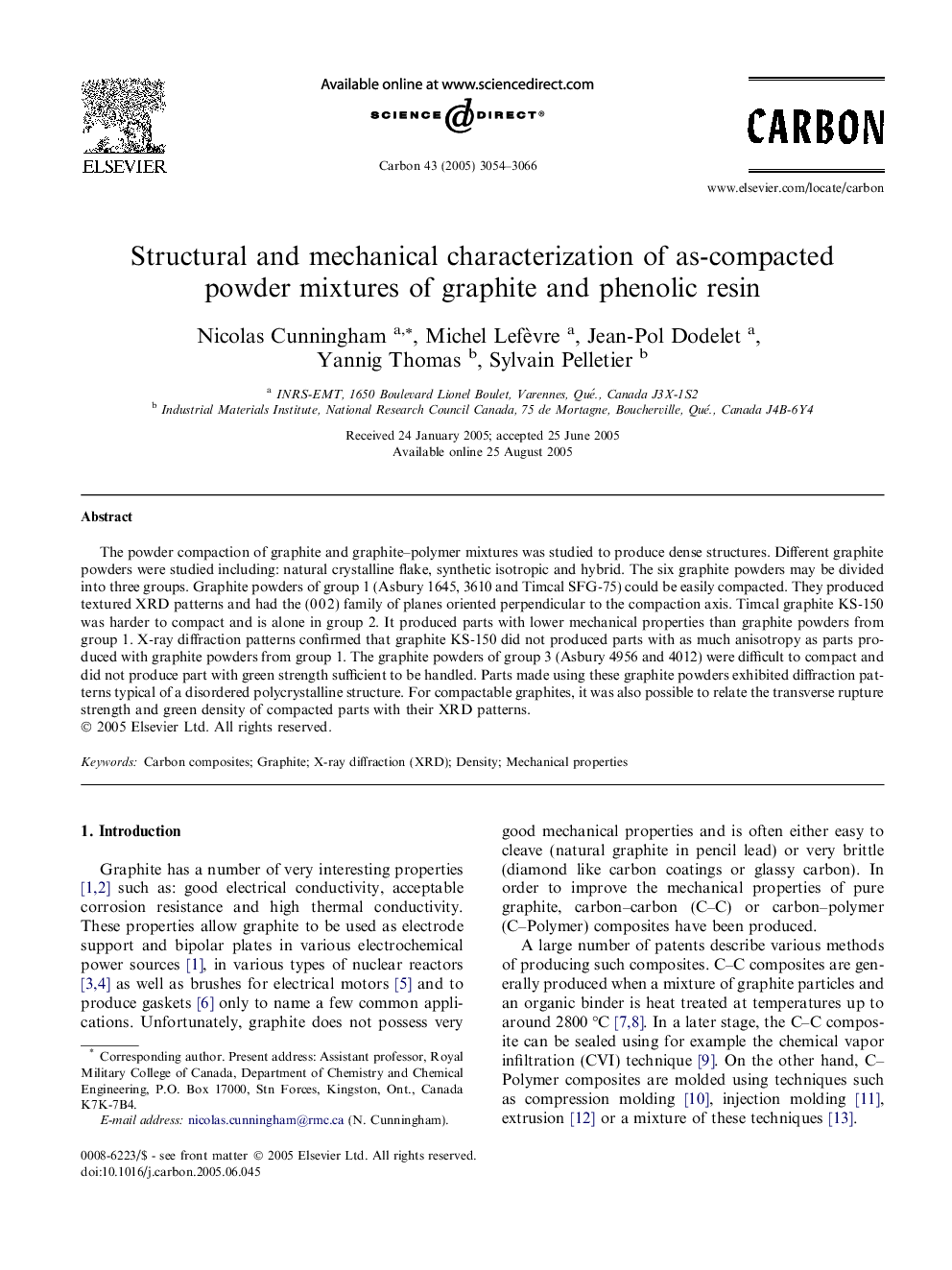| Article ID | Journal | Published Year | Pages | File Type |
|---|---|---|---|---|
| 1419422 | Carbon | 2005 | 13 Pages |
The powder compaction of graphite and graphite–polymer mixtures was studied to produce dense structures. Different graphite powders were studied including: natural crystalline flake, synthetic isotropic and hybrid. The six graphite powders may be divided into three groups. Graphite powders of group 1 (Asbury 1645, 3610 and Timcal SFG-75) could be easily compacted. They produced textured XRD patterns and had the (0 0 2) family of planes oriented perpendicular to the compaction axis. Timcal graphite KS-150 was harder to compact and is alone in group 2. It produced parts with lower mechanical properties than graphite powders from group 1. X-ray diffraction patterns confirmed that graphite KS-150 did not produced parts with as much anisotropy as parts produced with graphite powders from group 1. The graphite powders of group 3 (Asbury 4956 and 4012) were difficult to compact and did not produce part with green strength sufficient to be handled. Parts made using these graphite powders exhibited diffraction patterns typical of a disordered polycrystalline structure. For compactable graphites, it was also possible to relate the transverse rupture strength and green density of compacted parts with their XRD patterns.
